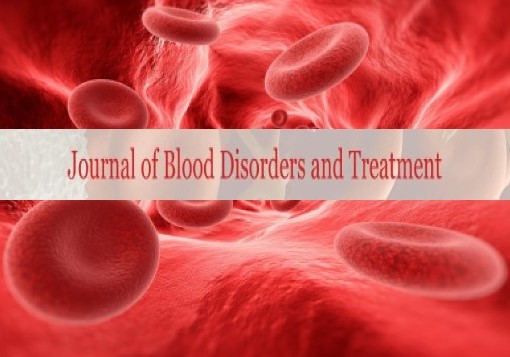An over view on leukemia: Symptoms, causes and risk factors
#Equally contribution
Received: 06-Sep-2021 Accepted Date: Sep 20, 2021; Published: 27-Sep-2021
This open-access article is distributed under the terms of the Creative Commons Attribution Non-Commercial License (CC BY-NC) (http://creativecommons.org/licenses/by-nc/4.0/), which permits reuse, distribution and reproduction of the article, provided that the original work is properly cited and the reuse is restricted to noncommercial purposes. For commercial reuse, contact reprints@pulsus.com
Introduction
Leukemia is cancer of the body’s blood-forming tissues, as well as the bone marrow and also the vascular system. Many sorts of malignant neoplastic disease exist. Some varieties of malignant neoplastic disease area unit a lot of common in youngsters. Different varieties of malignant neoplastic disease occur principally in adults. Malignant neoplastic disease sometimes involves the white blood cells. Your white blood cells area unit potent infection fighters — they unremarkably grow associate degree divide in an orderly means, as your body desires them. However in folks with malignant neoplastic disease, the bone marrow produces associate degree excessive quantity of abnormal white blood cells, that does not operate properly. Treatment for malignant neoplastic disease may be complicated — looking on the kind of malignant neoplastic disease and different factors. However there are unit methods and resources that may facilitate build your treatment successfully [1].
Symptoms
Leukemia symptoms vary, looking on the kind of malignant neoplastic disease. Common malignant neoplastic disease signs and symptoms include:
• Fever or chills.
• Persistent fatigue, weakness.
• Frequent or severe infections.
• Losing weight while not making an attempt.
• Swollen body fluid nodes, enlarged liver or spleen.
• Easy hurt or bruising.
• Recurrent nosebleeds.
• Tiny red spots in your skin (petechiae)
• Excessive sweating, particularly at midnight.
• Bone pain or tenderness.
Causes
Scientists do not perceive the precise causes of malignant neoplastic disease. It looks to develop from a mix of genetic and environmental factors.
Leukemia formation
In general, malignant neoplastic disease is believed to occur once some blood cells acquire changes (mutations) in their genetic material or DNA. A cell’s DNA contains the directions that tell a cell what to try to to. Normally, the DNA tells the cell to grow at a group rate and to die at a group time. In malignant neoplastic disease, the mutations tell the blood cells to continue growing and dividing. When this happens, blood corpuscle production becomes out of management [2]. Over time, these abnormal cells will displace healthy blood cells within the bone marrow, resulting in fewer healthy white blood cells, red blood cells and platelets, inflicting the signs and symptoms of malignant neoplastic disease [3].
Types of malignant neoplastic disease
The major sorts of malignant neoplastic disease are:
Acute leukemia (ALL): this can be the foremost common form of malignant neoplastic disease in young youngsters. ALL also can occur in adults.
• Acute myelogenous malignant neoplastic disease (AML): AML could be a common form of malignant neoplastic disease. It happens in youngsters and adults. AML is that the commonest form of cancer of the blood in adults.
• Chronic leukemia (CLL): With CLL, the foremost common chronic adult malignant neoplastic disease, you will feel well for years while not having treatment.
• Chronic myelogenous malignant neoplastic disease (CML): This kind of malignant neoplastic disease primarily affects adults. Someone with CML might have few or no symptoms for months or years before coming into a introduce that the malignant neoplastic disease cells grow a lot of quickly.
• Other sorts: Other, rarer sorts of malignant neoplastic disease exist, as well as furry cell malignant neoplastic disease, myelodysplastic syndromes and myeloproliferative disorders [4].
Risk factors
Factors that will increase your risk of developing some sorts of malignant neoplastic disease include:
• Previous cancer treatment: People who’ve had bound sorts of therapy associate degree radiotherapy for different cancers have an inflated risk of developing bound sorts of malignant neoplastic disease.
• Genetic disorders: Genetic abnormalities appear to play a job within the development of malignant neoplastic disease. Bound genetic disorders, like congenital abnormality, area unit related to associate degree inflated risk of malignant neoplastic disease.
• Exposure to bound chemicals: Exposure to bound chemicals, like benzol — that is found in fuel associate degree is employed by the industry — is joined to an inflated risk of some varieties of malignant neoplastic disease.
• Smoking: Smoking cigarettes will increase the chance of acute myelogenous malignant neoplastic disease.
• Family history of malignant neoplastic disease: If members of your family are diagnosed with malignant neoplastic disease, your risk of the unwellness is also inflated [5]
REFERENCES
- Juliusson G, Hough R. Leukemia. Prog Tumor Res. 2016; 43:87-100.
- Devine SM, Larson RA. Acute leukemia in adults: recent developments in diagnosis and treatment. CA Cancer J Clin. 1994; 44(6):326-52.
- An Q, Fan CH, Xu SM. Recent perspectives of pediatric leukemia - an update. Eur Rev Med Pharmacol Sci. 2017; 21(4 Suppl):31-36.
- Brunning RD. Classification of acute leukemias. Semin Diagn Pathol. 2003;20(3):142-53.
- Scarfò L, Ferreri AJ, Ghia P. Chronic lymphocytic leukaemia. Crit Rev Oncol Hematol. 2016;104:169-82.





